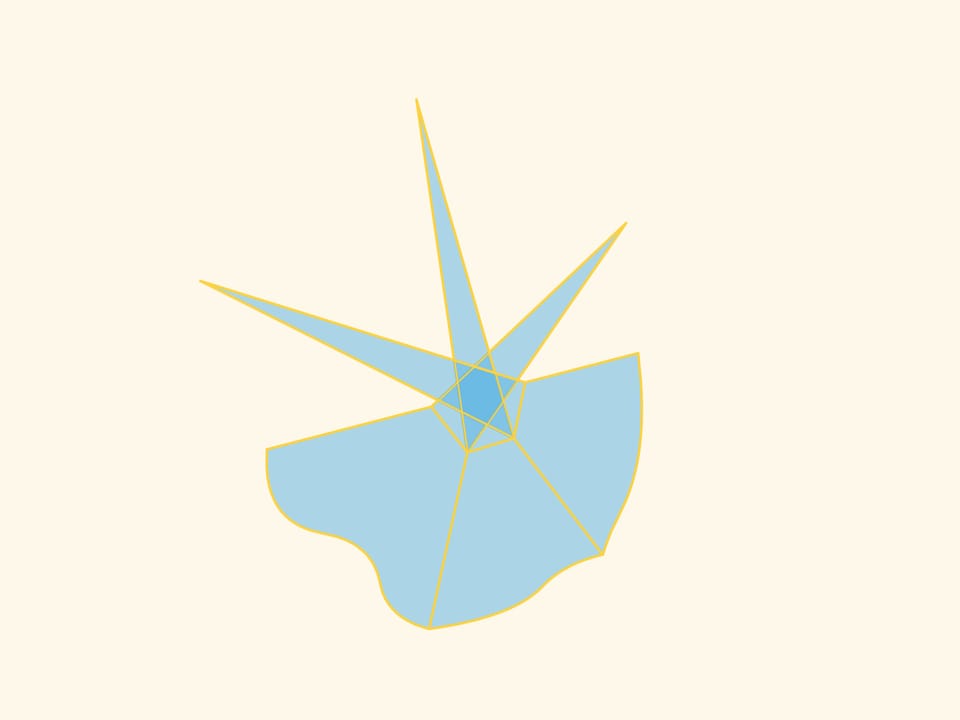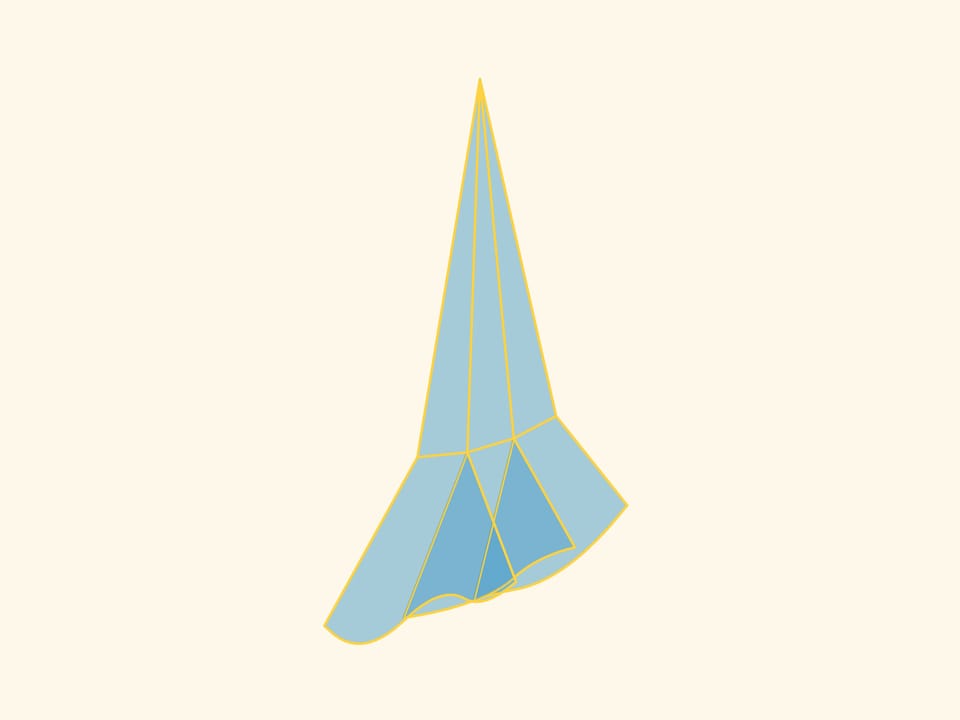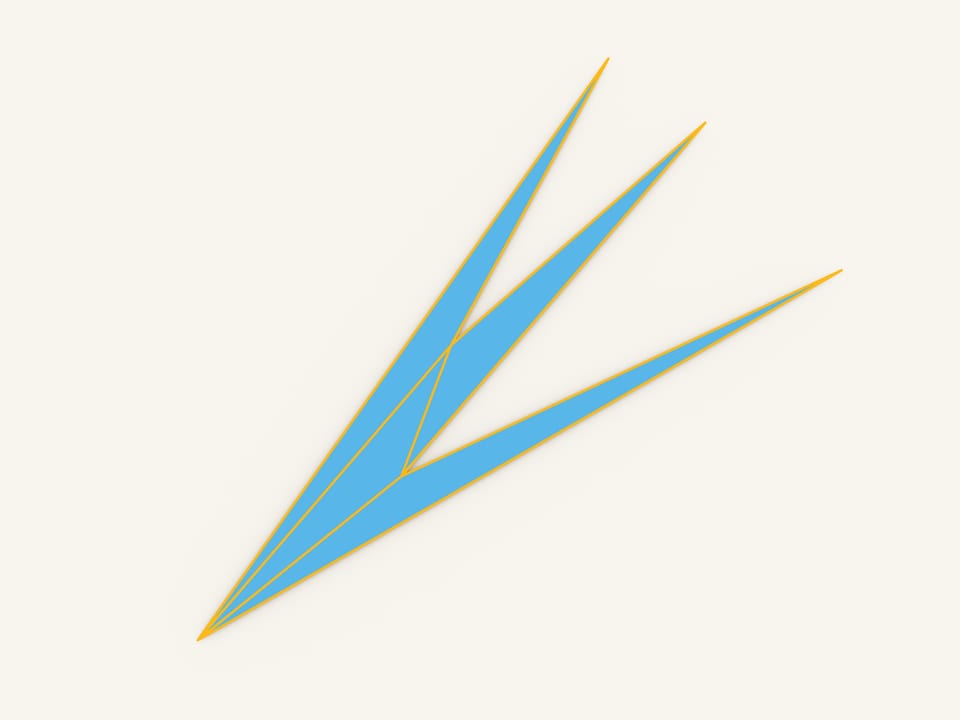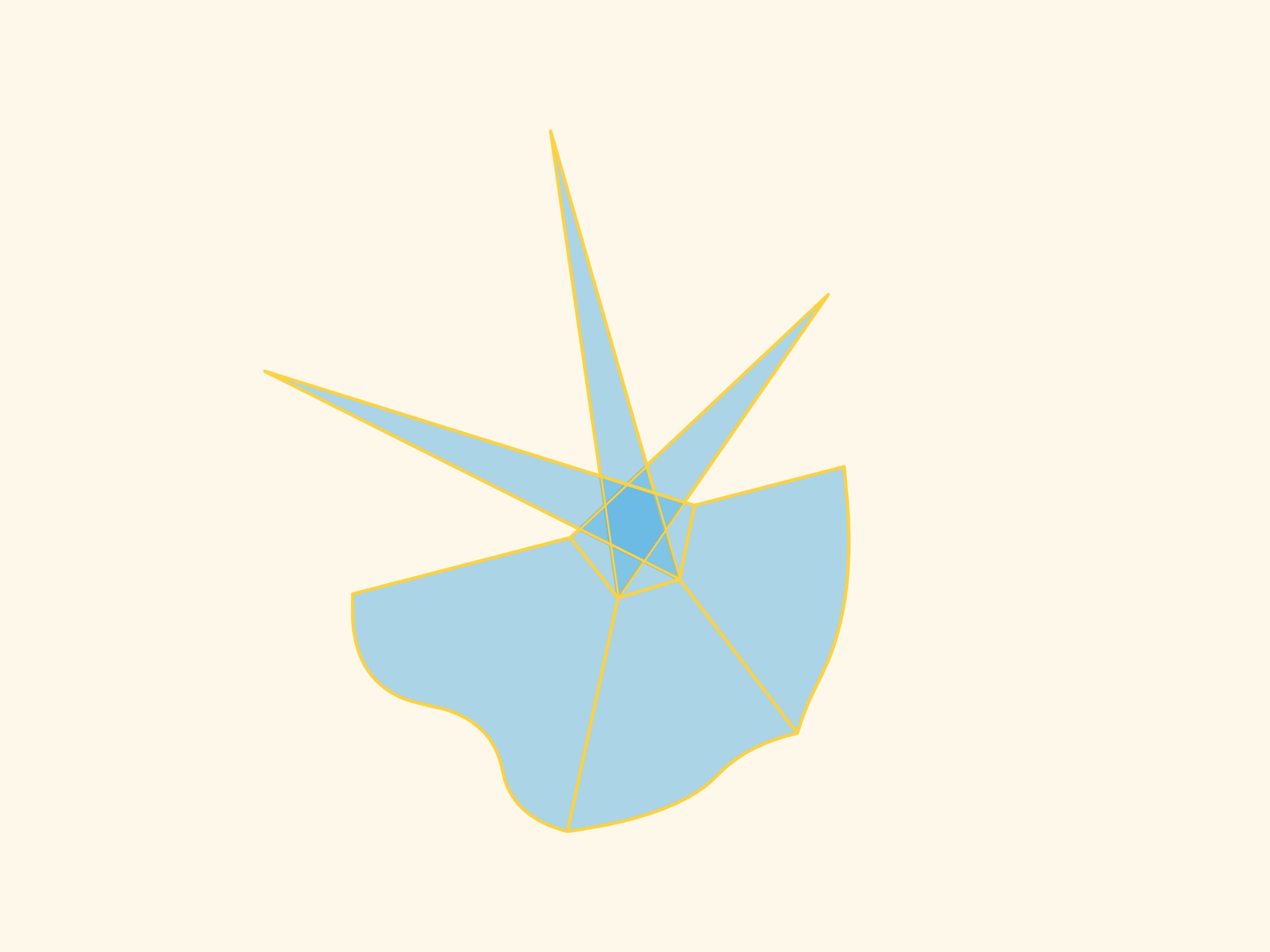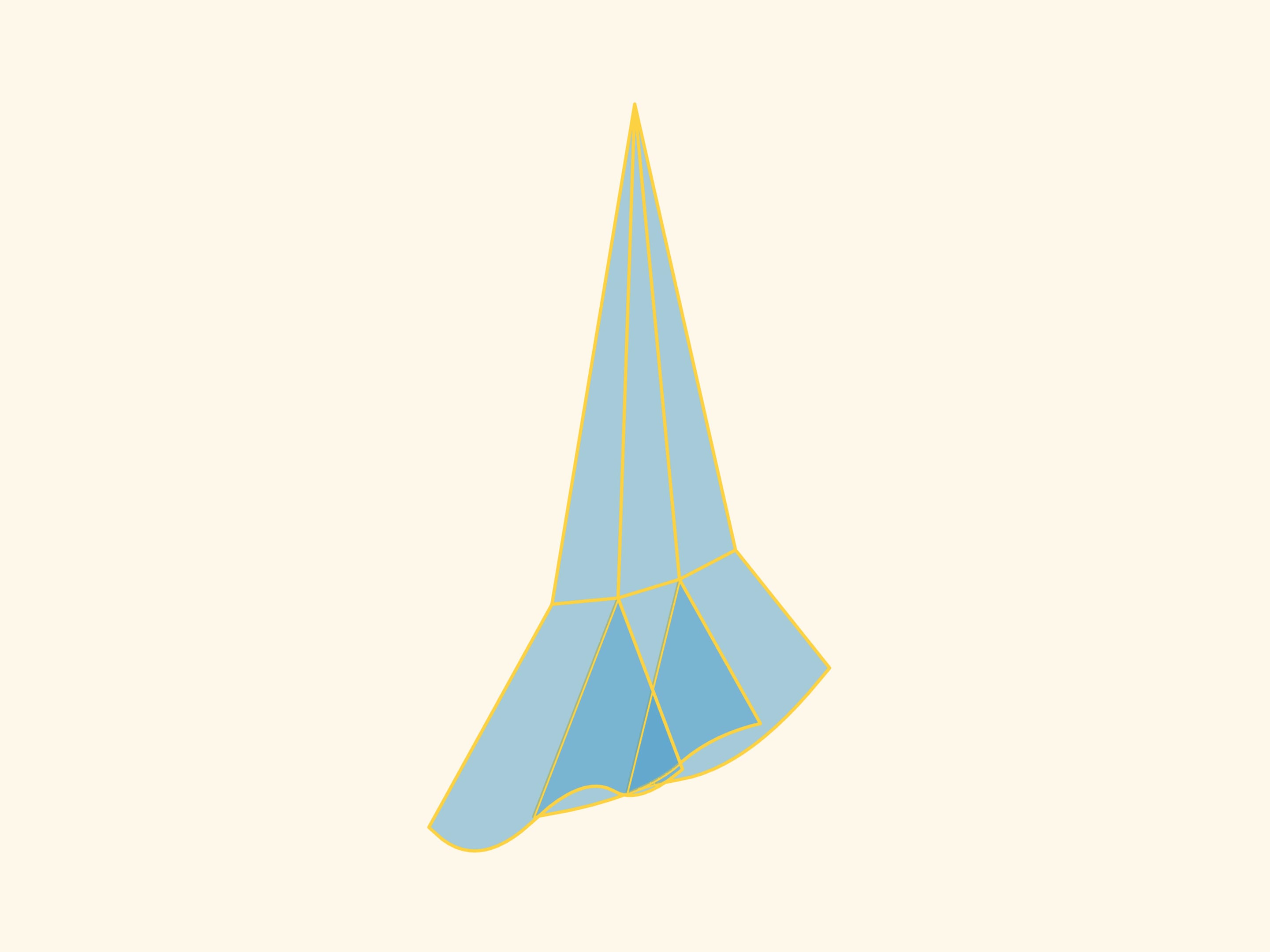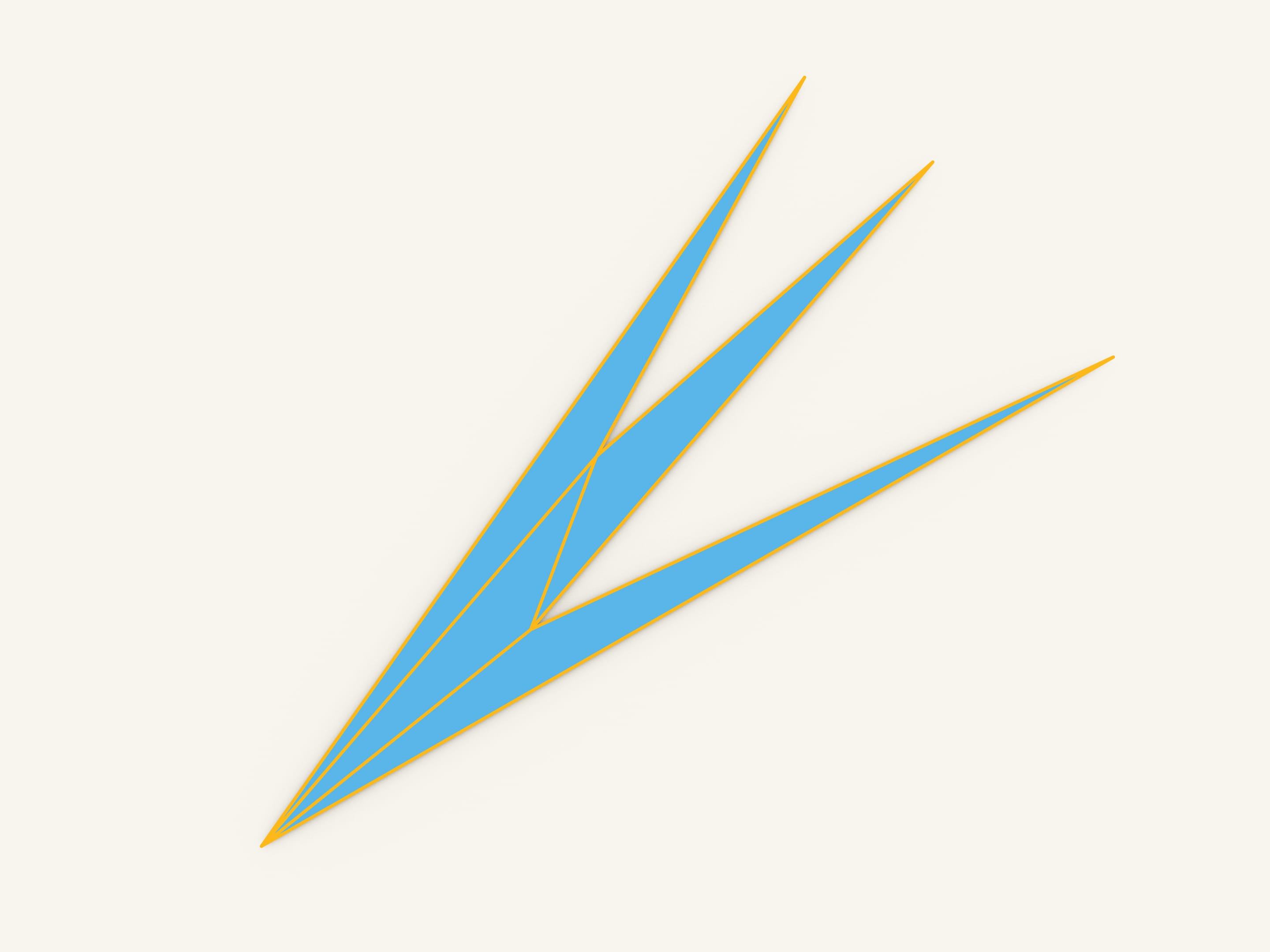Albrecht Durer (1471—1528) was a great german painter. He studied theoretical questions of art, in particular, problems of perspective. A part of his book «The art of measurement with a ruler and compasses, plane and spatial bodies», 1525, he devoted to the study of properties of geometrical objects, in particular, polyhedra and their nets.
An net consists of a number of polygons placed without intersections in a single plane and a number of gluing rules of the polygon edges. If some cut of a polyhedron along its edges allows to use a single polygon without breaking the rule of no intersections, such a net is called connected.
On the pages of his book Durer provides different connected nets of sometimes quite complicated polyhedra. It's doubtable that he was thinking of whether a single polygon is always enough, but the following assumption is often called after him. The Durer conjecture tells us that every convex polyhedron has at least one connected net.
Why do we stay interested in polyhedron nets for centuries? The matter is that a net contains the internal geometry of the polyhedron, namely, the information a point-like creature living strictly on the polyhedron may get. This creature may only measure distances between points. Having some mathematical abilities, the creature can also determine angles between directions and compute areas, …
For some purposes using a net is «more comfortable» that using the polyhedron. For example, if you want to send a model of a polyhedron to another town, you need to send a package. But to send a net of a polyhedron it's sufficient to send a construct the convex polyhedron himself. If you think that transportation of polyhedra is a rare operation, you are wrong! The result we see in everyday life when buying a box of milk or juice…
The Durer conjecture is about convex polyhedra. It has neither been proved nor disproved yet. But if the original problem is hard to solve, one should change some conditions and try to solve the resulting problem. In our case it's natural to study the analogue of the conjecture including non-convex polyhedra.
It's easy to build a non-convex polyhedron possibly having non-convex faces that has no connected nets. Take a intersect the star. Thus, the base should be separated from the side faces and the net will not be connected.
It's not so easy to construct a polyhedron with convex faces not having a single connected net. The first example was given only in 1999.
Move from the vertices of a tetrahedron along all the edges to a small common self-intersecting.
After considering a non-convex counterexample return to its original setting: convex polyhedra.
The simplest convex polyhedron is a triangular pyramid: it has 4 vertices and 4 faces. Even in this simplest case there are connected nets. There is still no convex polyhedron constructed having only self-intersecting connected nets.
Recently N. P. Dolbilin has stated a problem about the «anti-Durer» conjecture. It says that for every $k$ there is a convex polyhedron such that every its net placed without intersections on a plane should have at least $k$ pieces.
We should mention that if the Durer conjecture is false, there are two completely different cases.
The bounded case: every convex polyhedron has a net consisting of no more that $K$ pieces. Moreover, the bounding number $K$ can be chosen the same for all the convex polyhedra, i.e. not depending on the particular example.
The other case is more interesting: that the number of pieces is not bounded from above for convex polyhedra.
The «anti-Durer» conjecture says that we are in the unbounded case.
No so far its analogue for non-convex polyhedra (in the unbounded case) has been proved by russian mathematicians.
You may try to construct a convex polyhedron that has only self-intersecting connected nets. Or to prove that such a polyhedron doesn't exist. And if you succeed, you will add a new vivid page to geometry.






